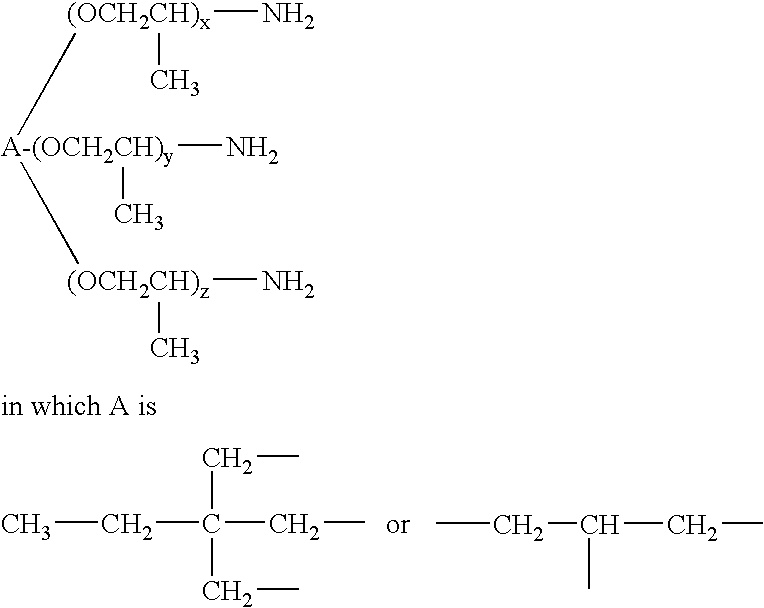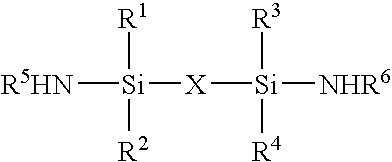Preformed adhesive bodies useful for joining substrates
a technology of adhesive bodies and substrates, applied in the direction of adhesive types, transportation and packaging, synthetic resin layered products, etc., to achieve the effect of less tacky and more resistant to deformation
- Summary
- Abstract
- Description
- Claims
- Application Information
AI Technical Summary
Benefits of technology
Problems solved by technology
Method used
Image
Examples
example 2 (
Invention)
[0089]An adhesive composition in accordance with the invention was prepared using the same components in the same amounts as in Example 1, with the adhesive composition additionally containing 9 parts by weight DAROCURE 1173 photoinitiator and 20 parts by weight CN 110 UV curable oligomer supplied by Sartomer (total=887.4 parts by weight).
example 3 (
Invention)
[0090]An adhesive composition in accordance with the invention was prepared using the same components in the same amounts as in Example 2, with the adhesive composition additionally containing 20 parts by weight trimethylolpropane trimethacrylate.
[0091]Adhesive bodies were formed using the adhesive compositions of Examples 2 and 3. The adhesive bodies were cured on one surface in one pass using a LOCTITE brand UV machine and the following conditions: light source to surface=4.5 inches; belt speed=3 ft / minute; B bulb; UV A=1.341 W / cm2 intensity, 7.395 J / cm2 energy; UV B=0.373 W / cm2 intensity, 2.141 J / cm2 energy; UV C=0.045 W / cm2 intensity, 0.29 J / cm2 energy; UV V=0.633 W / cm2 intensity, 3.694 J / cm2 energy; UV total=13.52 J / cm2 energy. The adhesive body surfaces that had been exposed to the ultraviolet radiation were essentially non-tacky at room temperature, with the adhesive body of Example 3 exhibiting a somewhat higher degree of surface cure than the adhesive body of Exam...
PUM
| Property | Measurement | Unit |
|---|---|---|
| Temperature | aaaaa | aaaaa |
| Shape | aaaaa | aaaaa |
| Adhesivity | aaaaa | aaaaa |
Abstract
Description
Claims
Application Information
 Login to View More
Login to View More - R&D
- Intellectual Property
- Life Sciences
- Materials
- Tech Scout
- Unparalleled Data Quality
- Higher Quality Content
- 60% Fewer Hallucinations
Browse by: Latest US Patents, China's latest patents, Technical Efficacy Thesaurus, Application Domain, Technology Topic, Popular Technical Reports.
© 2025 PatSnap. All rights reserved.Legal|Privacy policy|Modern Slavery Act Transparency Statement|Sitemap|About US| Contact US: help@patsnap.com



